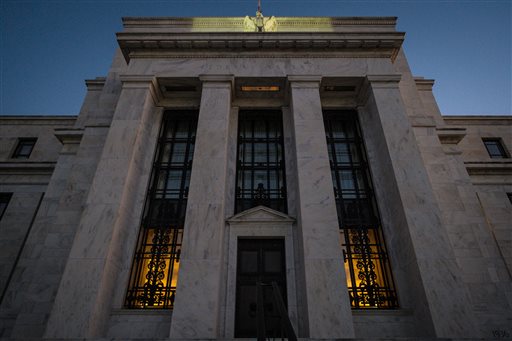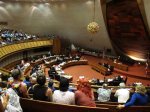“I can only say: I’m sorry, America,” is how former Federal Reserve official Andrew Huszar opened a Monday op-ed in The Wall Street Journal.
Videos by Rare
Huszar used to run the Federal Reserve’s asset purchasing program known as “quantitative easing,” but says that he has come to believe something much different of the unprecedented asset purchasing program.
“I’ve come to recognize the program for what it really is: the greatest backdoor Wall Street bailout of all time,” he wrote.
Five years ago this month, on Black Friday, the Fed launched an unprecedented shopping spree. By that point in the financial crisis, Congress had already passed legislation, the Troubled Asset Relief Program, to halt the U.S. banking system’s free fall. Beyond Wall Street, though, the economic pain was still soaring. In the last three months of 2008 alone, almost two million Americans would lose their jobs.
The Fed said it wanted to help—through a new program of massive bond purchases. There were secondary goals, but Chairman Ben Bernanke made clear that the Fed’s central motivation was to “affect credit conditions for households and businesses”: to drive down the cost of credit so that more Americans hurting from the tanking economy could use it to weather the downturn. For this reason, he originally called the initiative “credit easing.”
My part of the story began a few months later. Having been at the Fed for seven years, until early 2008, I was working on Wall Street in spring 2009 when I got an unexpected phone call. Would I come back to work on the Fed’s trading floor? The job: managing what was at the heart of QE’s bond-buying spree—a wild attempt to buy $1.25 trillion in mortgage bonds in 12 months. Incredibly, the Fed was calling to ask if I wanted to quarterback the largest economic stimulus in U.S. history.
“In its almost 100-year history, the Fed had never bought one mortgage bond. Now my program was buying so many each day through active, unscripted trading that we constantly risked driving bond prices too high and crashing global confidence in key financial markets. We were working feverishly to preserve the impression that the Fed knew what it was doing,” he said.
Huszar admitted what many fear most, that Federal Reserve has lost its ability to operate outside of the pressures of Wall Street.
“I realized the Fed had lost any remaining ability to think independently from Wall Street. Demoralized, I returned to the private sector,” he laments.
The big problem, according to Huszar, is that the Federal Reserve covers up the real economic problems the country faces.
“Because QE was relentlessly pumping money into the financial markets during the past five years, it killed the urgency for Washington to confront a real crisis: that of a structurally unsound U.S. economy. Yes, those financial markets have rallied spectacularly, breathing much-needed life back into 401(k)s, but for how long?” Huszar warns.
Related articles
- The ugly view from inside the Fed’s money-printing machine (rare.go-vip.net)
- Former Fed Official: ‘Quantitative Easing’ Is a Huge Mistake (gawker.com)
- Confessions of a Quantitative Easer (realclearpolitics.com)



